ASUS at Computex 2016: The 10 Years of the Republic Of Gamers (ROG) Booth Tour
by Ian Cutress on June 22, 2016 8:00 AM ESTThe battle between ASUS and MSI for the best gaming ‘laptop’ is blurring some very thick lines. Both vendors now look at laptop water cooling as the top option, which drags the ‘laptop’ side of the equation heavily into a portable desktop scenario, depending on how heavy you think a portable system should be. At this point one might realize that the main difference between one of these systems and actually moving a desktop system is having to move a monitor, however I am told that high-end gaming notebooks, despite the investment, have a reasonable return and offer a flagship product at the top of the gaming notebook stack. At Computex we saw the next iteration of ASUS’s design, the GX800.
The ASUS ROG GX800: A Dual-GPU Liquid Cooled Laptop
On the last page we saw a 20L desktop design with dual GTX 1080s. The GX800 by comparison takes the higher efficiency GTX 980 MXM modules designed for laptops into the cooling loop, along with a Skylake based Core i7.
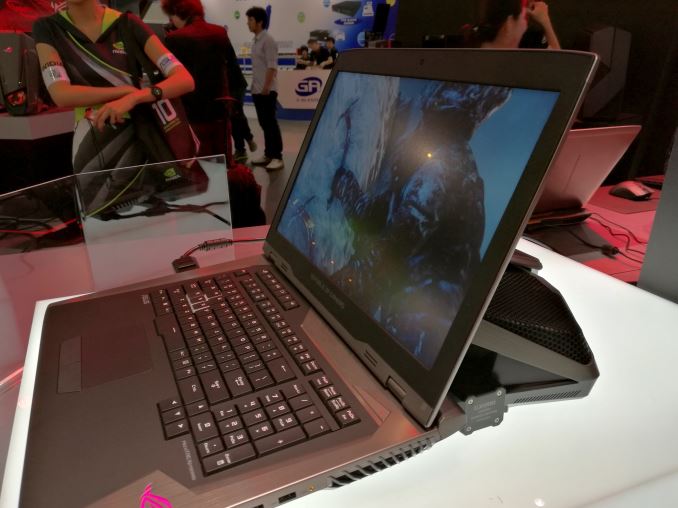
Click the image for the full resolution
The GX800 will come with a mechanical keyboard, offering 2.2mm of key travel, under the ‘MechTAG’ name. ASUS says they are using a custom type of switch, one they’re not willing to divulge at this time, but it should be akin to brown/red switches. It’s worth noting that by comparison to the main competition, ASUS has the keyboard in ‘the usual’ place for a notebook, whereas MSI has it at the bottom of the design as most gaming environments would necessitate a separate mouse.
On the sides we see a Thunderbolt 3 port, a USB 3.1 Type-C port (10 Gbps, and with TB3 indicates they are using the Intel Alpine Ridge controller), a USB 3.0 Type-A, separate mini-DisplayPort and HDMI ports, and a full-sized Ethernet port. There’s also an antenna segment, for users to have an external WiFi antenna, however it is worth noting that this in on the right-hand side of the system, which might cause a wire to interfere with anyone using a mouse on the right-hand side.
Obviously a system using dual GTX 980 graphics with a Core i7, even a 45W one, and a 4K display is going to be drawing some power. To that extent, ASUS uses two power supplies for the system. In order to use the discrete graphics, the power cable on the left in the image above needs to be in place as the system starts up. The system is designed to be overclocked, and if I recall correctly both power supplies should be around the 300-330W variety, allowing for a 600-660W system.
ASUS has not been discussing the GX800 that much in terms of exact specifications as of yet, though I would expect it to hit shelves in the second half of the year.
External Graphics: The XG Station 2
Back at CES in January we saw a number of external graphics solutions from ASUS, Razer and AMD. The latter two were using AMD’s solution over a Thunderbolt 3 PCIe based connection in a surprise collaboration between AMD and Intel, and the goal was to handle things like graphics hot-plug over TB3 appropriately. ASUS’ solution was to use a proprietary signal over TB3 to their XG Station, which would limit its usefulness to approved GPUs and approved ASUS laptops. For Computex, ASUS has dropped their custom solution and going with the recommended external graphics solution via Intel/AMD.
The XG Station 2 itself gets a design upgrade for the ROG 10-Year, featuring the Mayan design similar to the other ROG desktop products. The Station itself looks a little bit larger than before as well, with ASUS intent on physically supporting as many single GPU graphics cards as possible.
In opening it up, it is worth noting that the cooling methodology for this revolves around the three small fans at the top of the XG Station 2, drawing air in through the top and forcing it through the GPU. The exhaust then comes out the rear. Despite all the GPU action being on the left hand side of the device, the right hand side has some electronics so the dock can also be used for expansion ports.
In this case we have a USB 3.1 hub to allow for more ports, another network port (an Intel NIC), and additional Thunderbolt 3 connectors for other storage devices. It is worth noting that all the data goes through the single cable back to the main PC, and I’m unsure at this point which elements of the design have data priority (PCIe, networking, USB, or Display).




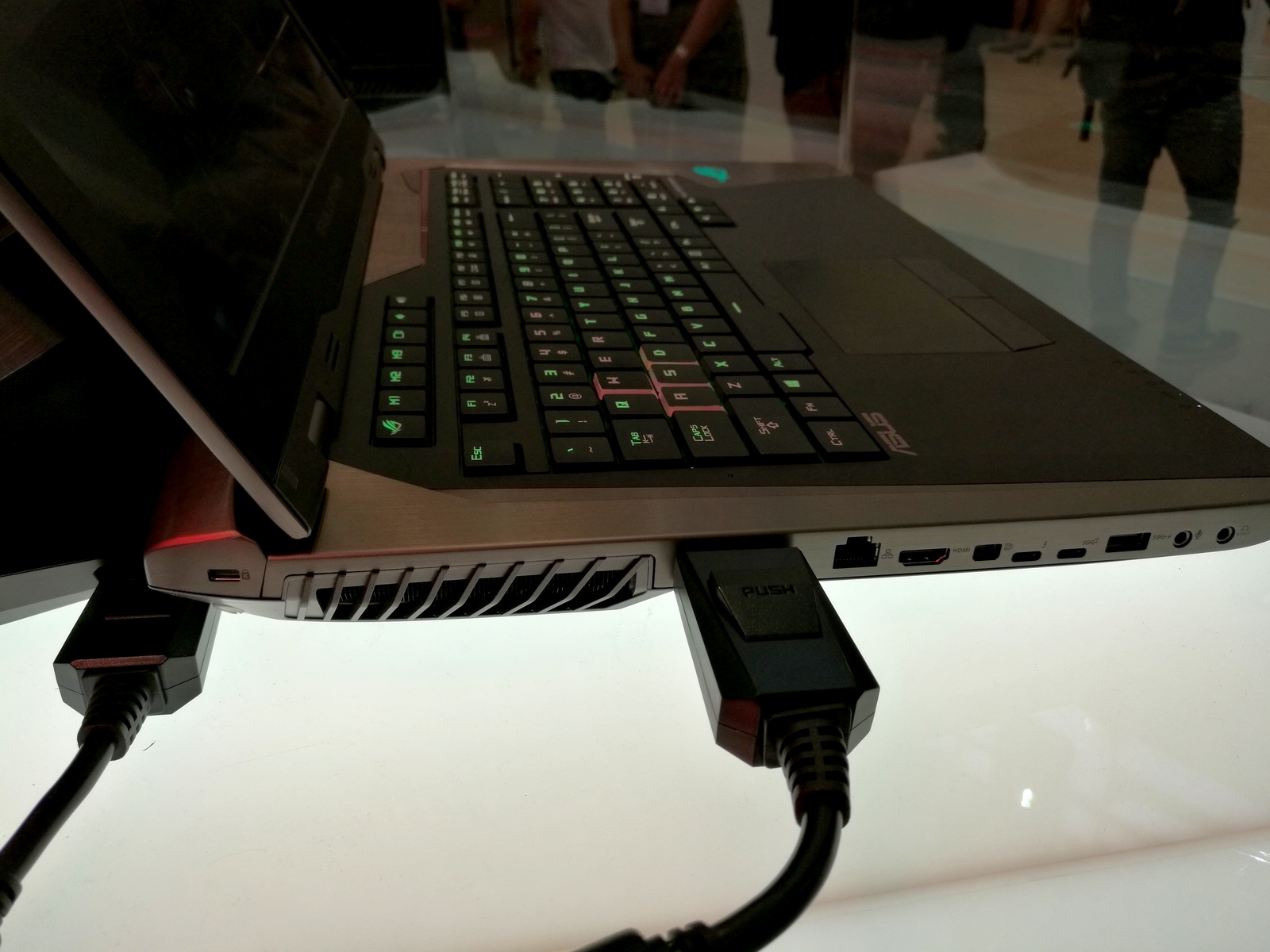
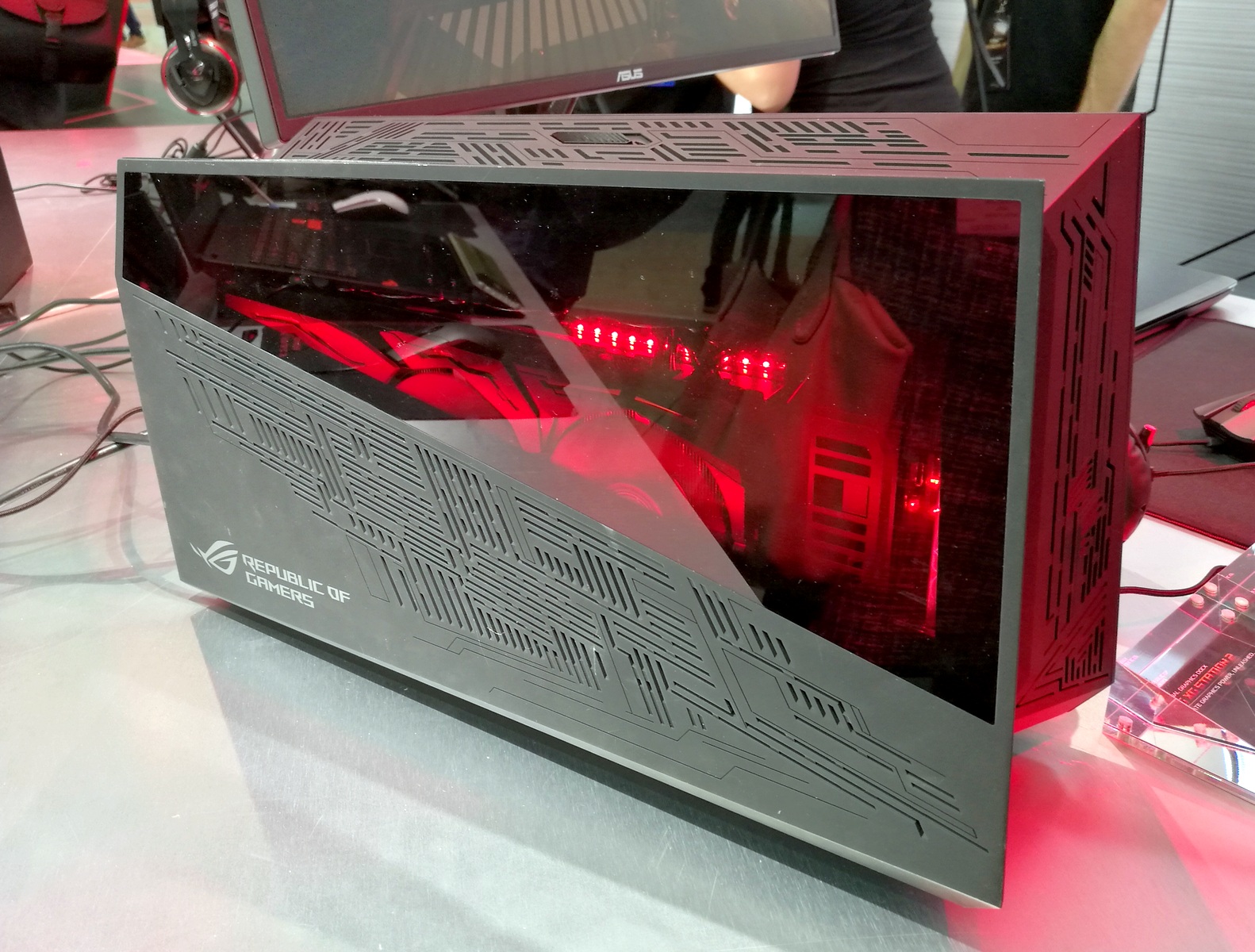
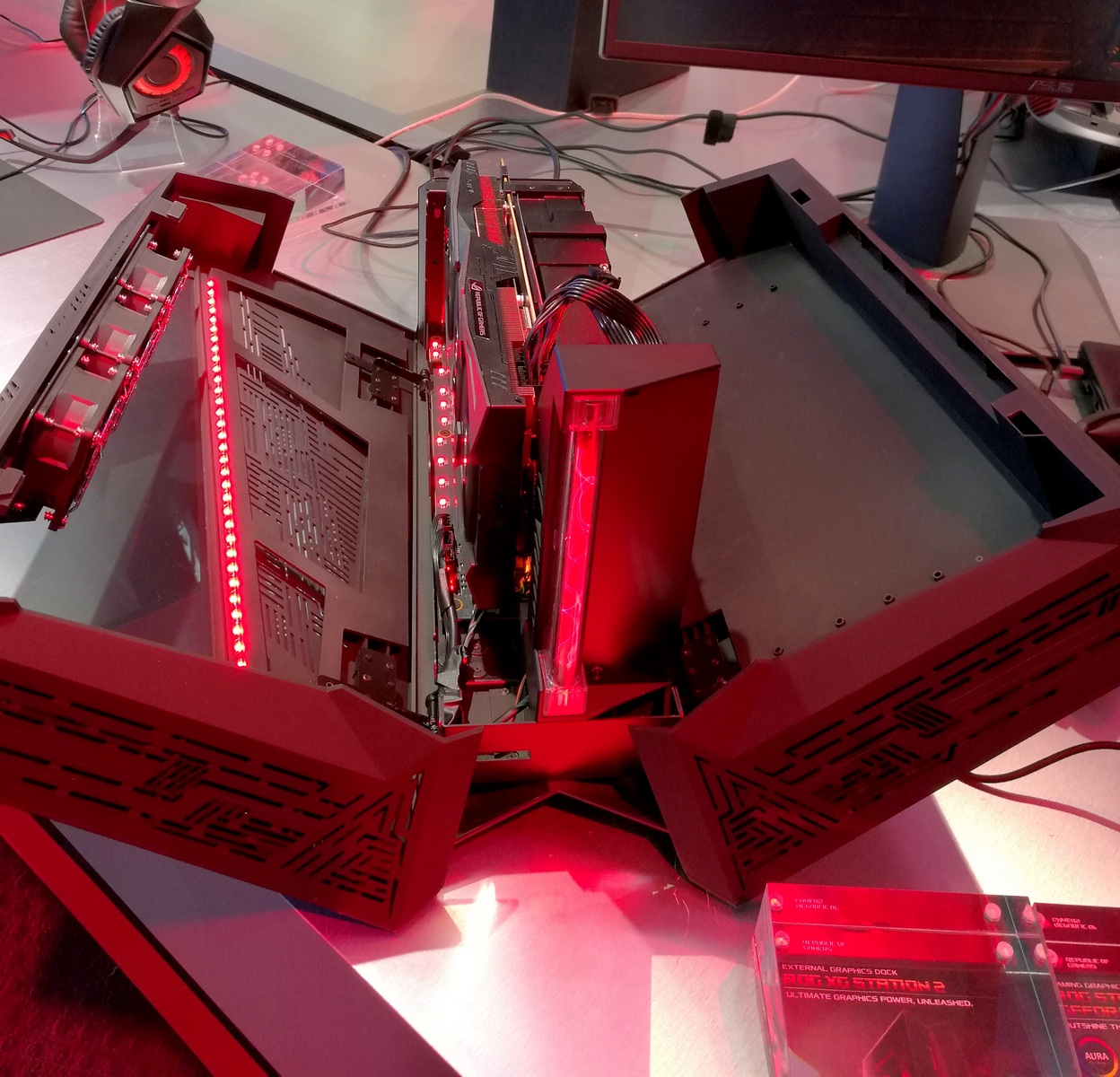
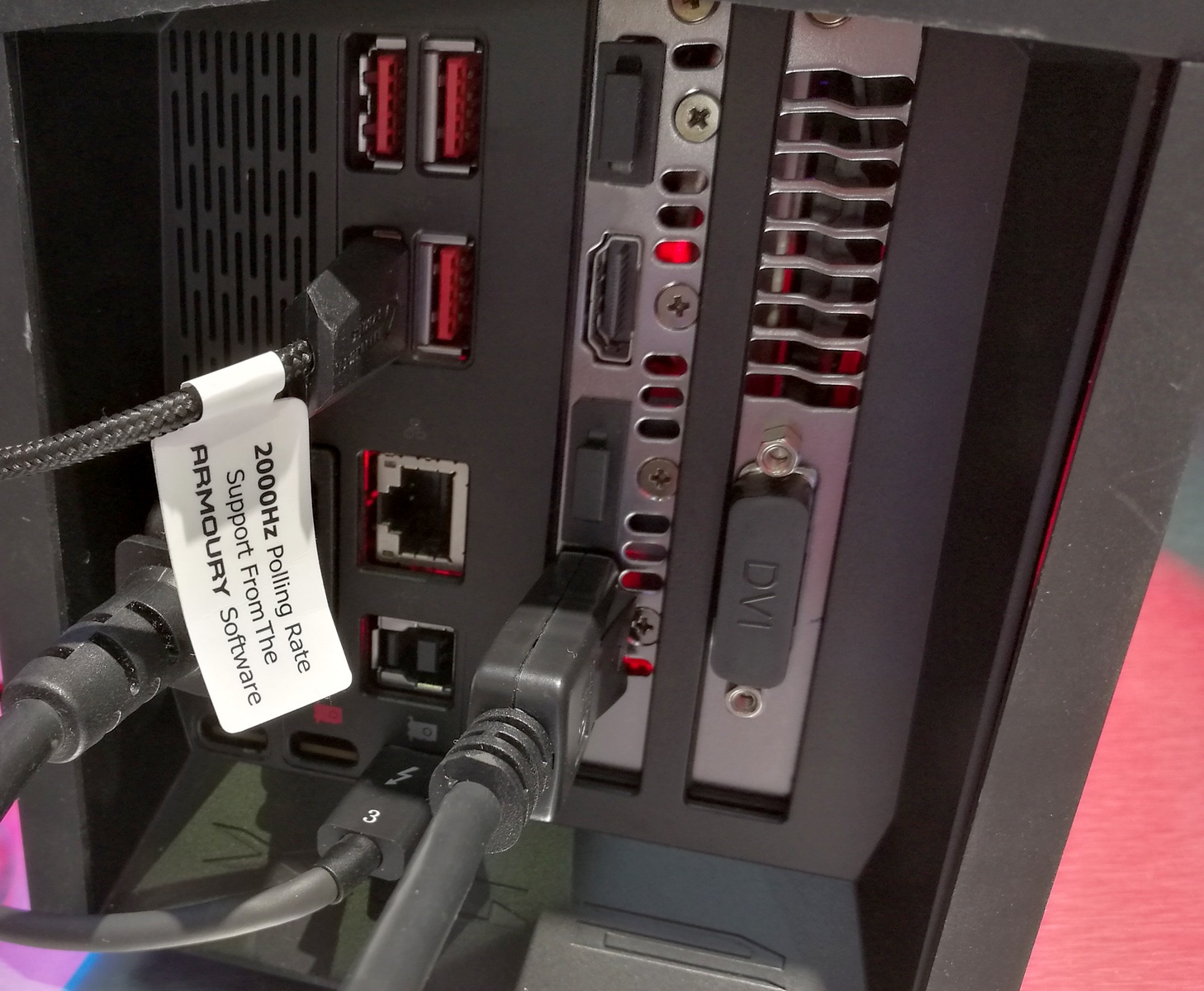
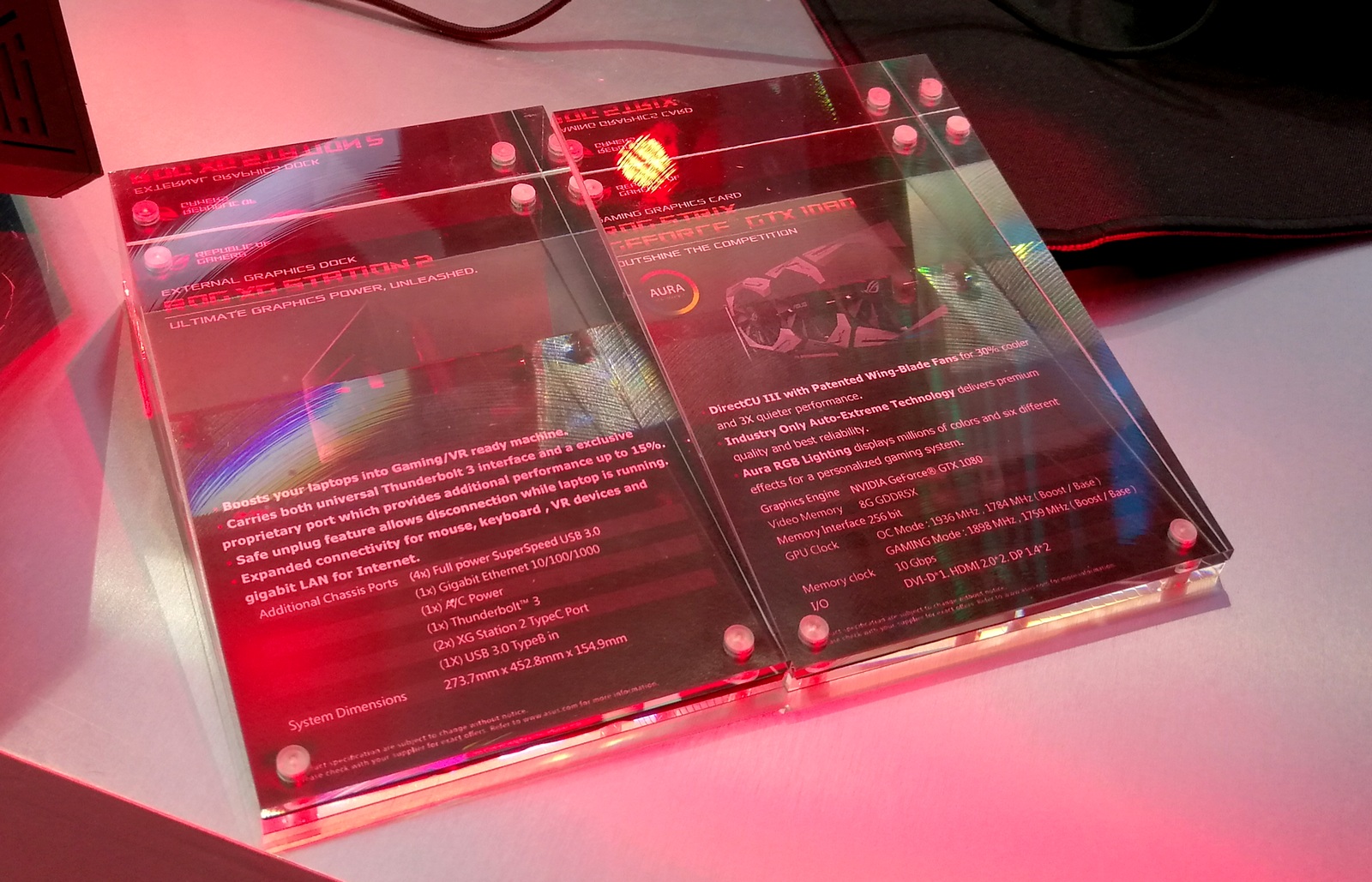








43 Comments
View All Comments
alphasquadron - Wednesday, June 22, 2016 - link
I used to think that too. I would think that the market for young kids who can afford such huge expensive machines would be quite small as it would it would compose of rich people and not middle class which is much larger market. But as companies make more crazy led shiny cases and even have ram modules that have lights and crap on them, I want to say that either they are just dumb and don't know how to sell stuff or that they have much more real live market data then I do and that these things actually are a good thing to make. I could never see it but maybe these things do provide a good revenue source for the company.Gastec - Wednesday, August 31, 2016 - link
I'm not sure that's the fact in North America. Not since the 15-30 years of age group queued for miles and waited for days to buy $500-600 iPhones.hechacker1 - Wednesday, June 22, 2016 - link
I went with another ATX case because I wanted a silent build, which includes AIO radiators for when you are actually using a Broadwell-E at 100%, along with powerful GPU. They can dump out a lot of heat.Right now my 6800k is using 45w at idle with a 4.3GHz overclock. That's according to the motherboard sensor on the Strix x99 Gaming that was mentioned in this article.
So while 45w isn't that much and can easily be handled by a HSF, at full tilt it's rated for 140w TDP (probably less because the 6800k is cut down).
Anyways, that's to say since I do VR with it, SLI really isn't a factor today and I use a single GPU. What ATX does allow is future further expansion via add in cards, and great and silent cooling. My whole rig has fans that are less than <1000 rpm at all times, and so it's almost always silent.
Bragabondio - Wednesday, June 22, 2016 - link
Nice rig heckhacker! Nowadays the components are getting more power efficient so I am planning on downgrading from 650W power supply to 550W one. As for silent build I am pretty sure I could make my rig as silent as I need it in mATX case (I am ready to go with minimum overclock to keep the noise down). In the eternal dilemma between firepower and mobility I prefer mobility (within a reason).BrokenCrayons - Thursday, June 23, 2016 - link
I'm continuing to use an ATX case for cooling, but the motherboard inside it is mATX since I finished my most recent upgrade. I briefly considered grabbing a smaller case, but it seemed like a waste of $30 to pick one up when there's nothing wrong with the old Lian Li tower on wheels from 2008 aside from the fact that it's got more space than I need right now.milkod2001 - Thursday, June 23, 2016 - link
Because it might be much easier to design full atx LGA 2011-v3 motherboard with all features enabled than micro/mini atx variant. I don't see that as a big issue though. You don't have to get monster case for that. Just get the smallest decent case for full atx mobo and have it sitting under table. Or don't go for LGA 2011-v3 get something simpler if you don't need all features if offers.fanofanand - Wednesday, June 22, 2016 - link
Nice work Ian, thanks for the info!madwolfa - Wednesday, June 22, 2016 - link
What's up with leather jackets?BrokenCrayons - Wednesday, June 22, 2016 - link
It's probably just attire the company's employees believe will appeal to people within their target market.iamkyle - Wednesday, June 22, 2016 - link
Of course, the x99 Edition 10 board doesn't come with 10GbE. But still commands the price premium.Looks like ASUS is all about money instead of delivering actual value.